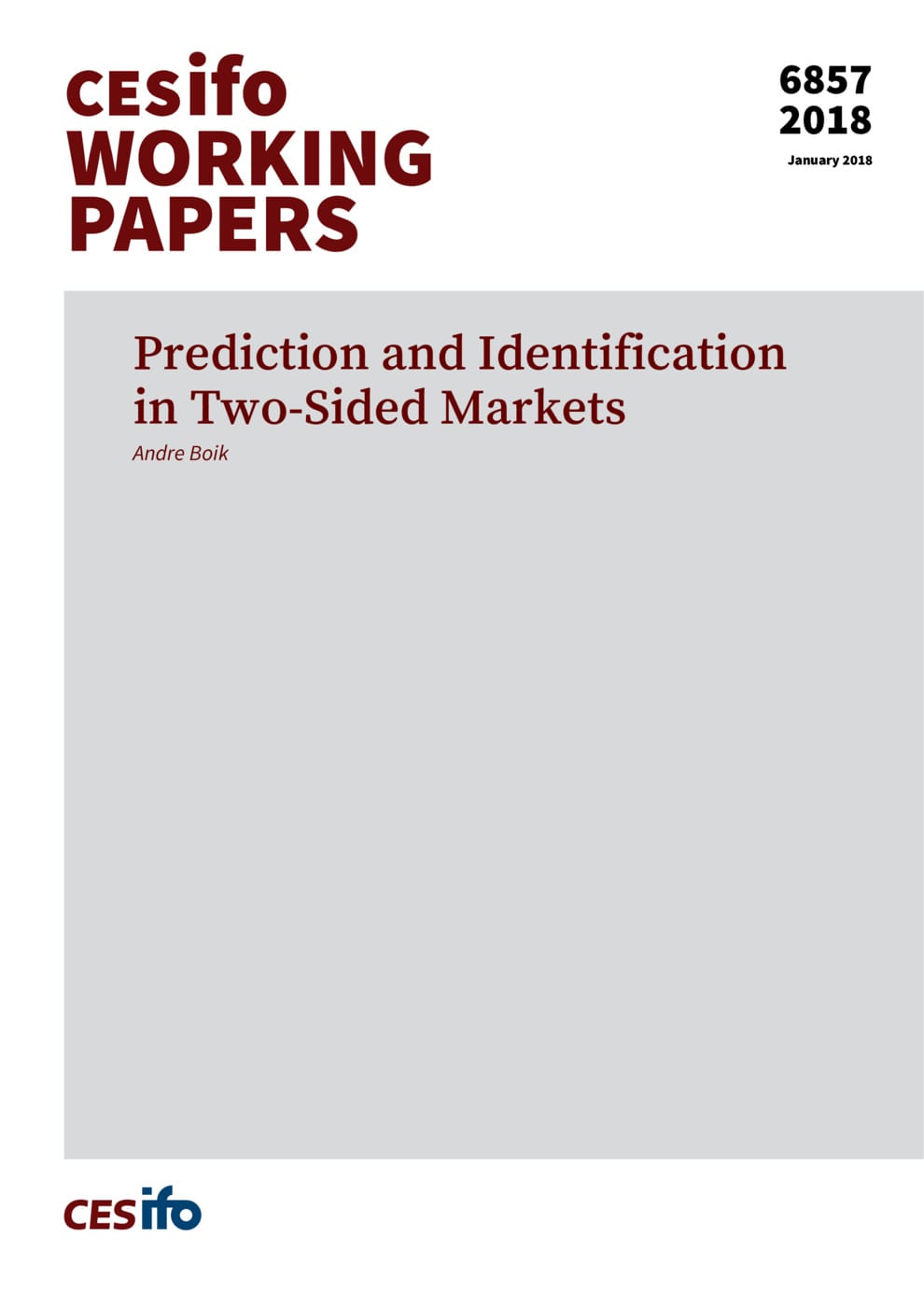Prediction and Identification in Two-Sided Markets
CESifo, Munich, 2018
CESifo Working Paper No. 6857

I introduce a reduced form two-sided market model to study prediction and identification in two-sided markets. The model generates the hallmark features of two-sided markets: potentially below cost or even negative prices to one side of the market, and the “see-saw” or “waterbed” effect of a tendency for price movements across sides to be negatively correlated. I show that the standard “one-sided” model of complements is a special case of the two-sided model, and that it generates those same hallmark features of two-sided markets. The model of complements also performs well in predicting price effects even when the data is actually generated by the two-sided market model; the “wrong” model often delivers the right answers and can be used to estimate market power and pass through rates. I show that even a naive one-sided model that ignores any relationship across goods/sides can perform well when prices to one side of the market are censored at zero, a very common outcome in two-sided markets. The main cost to using a model of complements to estimate cross-group effects in a two-sided market is that it invites the use of invalid instruments. I show that these findings are consistent with the empirical regularities and identification strategies in the existing two-sided market and indirect network effects literatures. I conclude by discussing the general difficulty of separately identifying whether price differences across subgroups of users of a platform are driven by pricing of network effects or simple price discrimination based on price elasticity.
Industrial Organisation
Economics of Digitization